Still No. 1
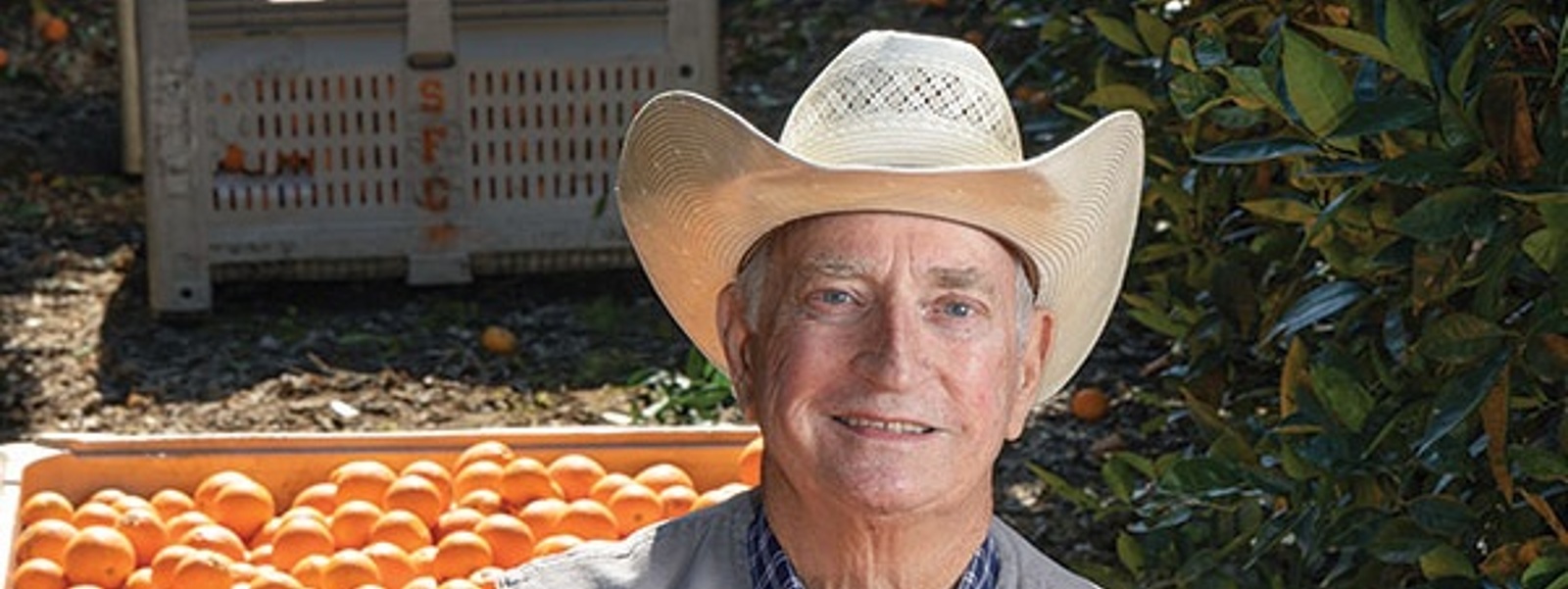
November/December 2023 California Bountiful magazine
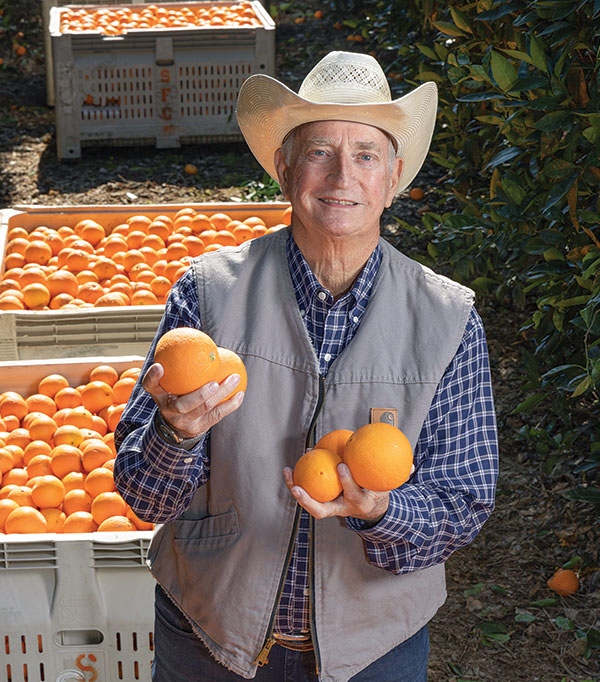
Humble navel orange maintains status as California’s top citrus fruit
Story by Ching Lee
Photos by Richard Green
In a sea of mandarins, tangerines, clementines and other citrus fruits occupying produce aisles this time of year, it could be easy to overlook the humble navel orange if only because of its familiarity.
The seedless golden globe invariably comes to mind when we think of the classic eating orange. That it’s available during the winter when other fruits are out of season makes it the go-to source of vitamin C and perfect for filling Christmas stockings and adorning holiday tables.
Even with the growing popularity of easy-peel mandarins, the navel orange remains the most widely grown citrus variety in the state—and for good reason. Farmer Chris Lange, who grows an array of citrus in Tulare and Fresno counties, calls the navel “the original great-eating citrus fruit.”
“It’s the king of the fruit varieties, at least certainly citrus varieties,” he says. “It’s always been No. 1.”
Juicy, sweet and mildly acidic with no seeds, the aromatic fruit became an instant hit when it was introduced at a citrus fair in Riverside County in 1879, winning the top prize. So called because one end of the fruit has what looks like a human belly button, the navel orange was far superior to other oranges at the time, and growers took notice. Within a decade, it became the leading variety, according to the Givaudan Citrus Variety Collection at the University of California, Riverside.

It all started in Riverside
Though its origin remains fuzzy, historians believe the navel orange came from a spontaneous mutation, or bud sport, found in another sweet orange tree near Bahia, Brazil in the early 1800s.
“Most of the citrus varieties that we enjoy today are not a product of human activity,” says Georgios Vidalakis, a plant pathologist at UC Riverside and director of the Citrus Clonal Protection Program.
Citrus trees tend to be more prone to natural mutations, he says, and the navel orange resulted from “what citrus does best, which is to always change—an amazing evolutionary mechanism to have as your advantage,” he adds.
By 1870, trees of the seedless orange made their way to the U.S. Department of Agriculture in Washington, D.C. Three of the trees were sent to Riverside resident Eliza Tibbets, an early California pioneer, suffragist, abolitionist and spiritualist—better known today as the mother of the Washington navel orange, as the fruit came to be called.
One of Tibbets’ trees is still alive and stands on the corner of Arlington and Magnolia avenues in Riverside. The California historic landmark commemorates her role in launching the California citrus industry. Commercial success of the navel orange not only cemented the Golden State’s reputation as the premier producer of the luxury fruit, but it helped propel citrus growing into a booming business for California farmers.
“It really put Southern California on the map. Los Angeles itself was all about citrus,” Vidalakis says.
As urbanization cannibalized the South State’s citrus groves, most production relocated to the San Joaquin Valley, with Tulare County now the top producer of navel oranges.
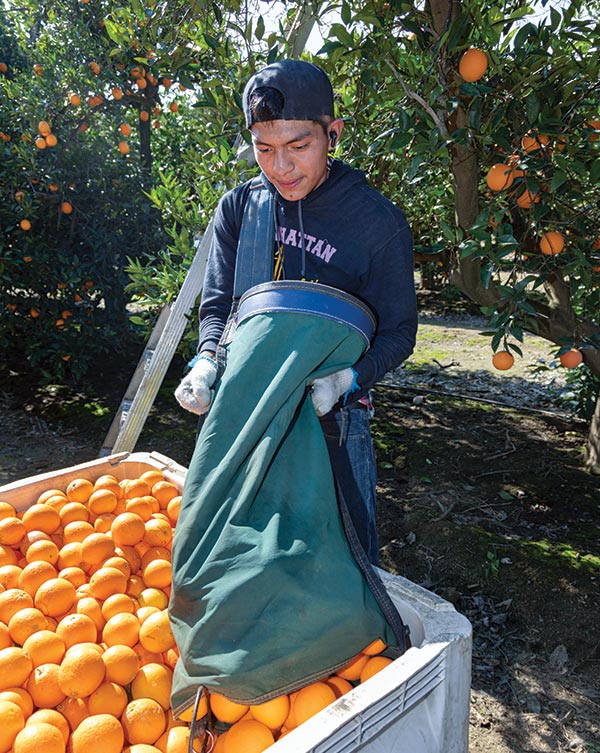
Season can extend into July
Because navel oranges are seedless, growers reproduce them by grafting budwood from the original tree to a new tree. This creates a clone with qualities identical to the original. Most navel orange trees in California can trace their roots to Tibbets’ parent trees, descendants of which are grown all over the world.
Through the years, other mutations have occurred, giving rise to navel orange varieties with other desirable characteristics. Perhaps most notable are the earlier- and later-maturing varieties, which allow growers to extend the navel orange season.
“They’re all in the category of Washington navels,” Lange says.
Early navels typically appear after Halloween and end around Christmas, while late-season ones run from Easter through June. If there’s a huge crop, navels can linger on the market into July.
Lange says his favorite are the midseason parent navels, usually available from Christmas to Easter. Yes, he’s referring to the same navel orange variety that Tibbets grew and that continues to dazzle taste buds.
“They are what I’m going to call the historic winter eating navel orange,” Lange says. “They’re beautiful in color, beautiful in shape. They’re juicy, and they have that high sugar and acid ratio.”
Vidalakis agrees. Eating a parent navel orange during peak season “is such a beautiful experience,” he says, “you wonder why you need any other variety.”
Some citrus companies have been selling the oranges as “heirloom” or “vintage” Washington navels to revive interest in the category, which has lost market share to easy-peel mandarins. But Lange says most midseason oranges are parent navels—except for the Cara Cara, a pink-flesh navel that came from a mutation on a Washington navel.
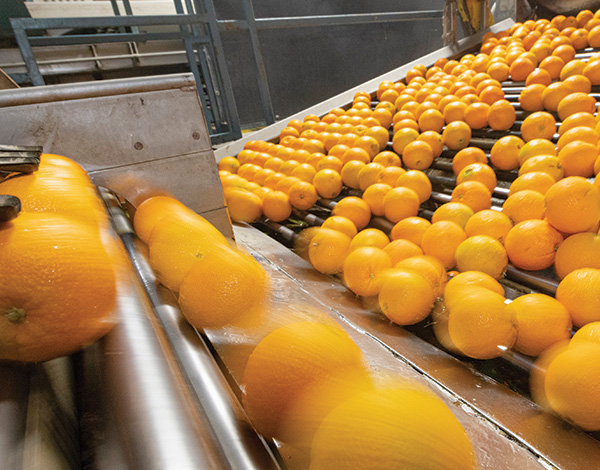
Navel oranges are here to stay
At about 110,000 bearing acres, navel oranges represent 43% of the state’s total citrus fruit plantings—still by far the top citrus variety, says Casey Creamer, president and CEO of California Citrus Mutual. But they have given way to more mandarins, which continue to gain popularity—and growers have responded by pulling out their navel and Valencia oranges. At 63,000 acres, mandarins now make up 25% of statewide citrus plantings.
Creamer says he expects navel acreage will go up and down as trends change and new citrus varieties come on the market. One thing for sure: Navel oranges aren’t going away, he says. With its thick skin, the fruit holds up well during transport, and Asian markets “really like the tried-and-true navel orange,” he says.
“It’s a staple, and people still love it,” Creamer says. “It is going to continue to be a strong part of the California citrus industry.”
Michael Chavez, vice president of sales and operations for Golden Star Citrus in Tulare County, says the staying power of the navel orange “comes down to heritage and tradition.”
Even though the citrus business has seen a major shift toward so-called easy-peels, navel oranges remain familiar to shoppers, reliably available on store shelves and are typically less expensive, he says. Once Washington navels come on the scene in January, he says, “they are usually just as easy to peel during that 90-day window as any mandarin.”
With its “iconic flavor profile,” Chavez says the navel orange also has an infectious way of making people crave it.
“Just start peeling an orange and get those aromatics in the air,” he says. “It’s intoxicating.”
Color isn’t always an indicator of ripeness
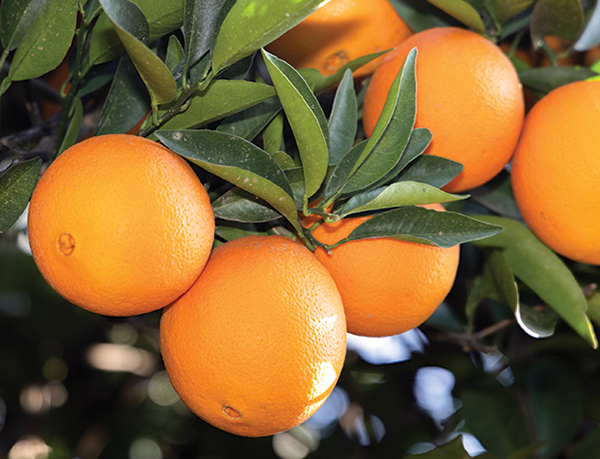
Have you ever been reluctant to buy oranges because the rind isn’t orange enough, thinking the fruit must not be ripe? After all, oranges are supposed to be orange in color, right? Not necessarily, according to farmer Chris Lange, whose family has been growing citrus fruit since 1960.
Cool nighttime temperatures allow the fruit to develop into that deep orange color people associate with oranges, but the color is only skin deep and does not indicate ripeness or flavor.
Early-season oranges, such as those harvested in early November, may be more yellow than orange “if we haven’t had colder weather to pop the color more,” he says.
Late-season oranges will sometimes develop a green tinge, or what growers call “regreen,” in late spring and early summer when temperatures rise. This happens more often with summer Valencia oranges, Lange notes.
If growers can’t rely on the fruit’s outer appearance, then how do they know when to start picking? They test the fruit, which must pass a state standard for sugar and acid levels.
“It’s a requirement for an orange to go into a bag or a carton,” Lange says of the testing. “They want to make sure that the consumer gets a tasty piece of fruit that is fully mature and has the flavor consumers would want in a navel orange.”

